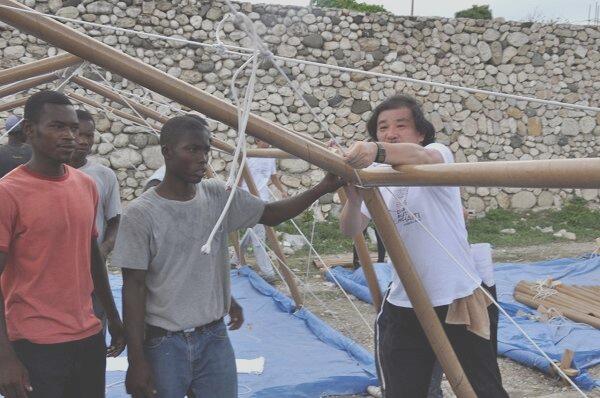This past week, the United Nations Human Settlements Program (UN-Habitat), announced a new partnership with 2014 Pritzker Prize winner Shigeru Ban, Hon. FAIA, who will be designing up to 12,000 refugee shelters for the Kalobeyei Settlement—a refugee camp in Northern Kenya, that was established in 2015, and now houses more than 37,000 South Sudanese refugees.
Ban, who signed the agreement last week on site, assessed the socioeconomic condition of the camp, and announced that he will be focusing on designing a sustainable shelter that would require brief technical supervision, use local materials, and be easy to maintain. According to the United Nations High Commissioner for Refugees (UNHCR) Kenya, this is a crucial factor, because “on average many displaced persons spend more than 16 years living as refugees in temporary shelter.”
The Japanese architect, who is known for his humanitarian projects in countries such as Haiti, China, India, Japan, and Nepal, will have to tackle many obstacles for this upcoming project. The camp that was originally designed to shelter 45,000 displaced people is now facing an increased influx of refugees due to a migrant crisis caused by the South Sudanese Civil War in 2013. As a result, many of the current shelters are dilapidated. Lack of sufficient water supply, harsh climate, deforestation, and the camp’s isolated location are among other major constrains facing the team.
As part of the design process, the Voluntary Architects Network (VAN),—a nongovernmental organization established by Ban—and the UN-Habitat will be conducting participatory workshops with “the representatives from refugee and host communit[ies]”, as well as “the county officers,” says UN-Habitat’s project coordinator, Yuka Terada.
According to the UNHCR Kenya, the design will be tested on 20 shelters before it will be sent for mass production and eventually replace the current temporary structures at the camp.
Read our past coverage of emergency shelters Ban designed for Nepalese who were affected by the 2015 earthquake here.
